
1942 is a 1984 vertically scrolling shooter video game developed and published by Capcom for arcades. Designed by Yoshiki Okamoto, it was the first game in the 194X series, and was followed by 1943: The Battle of Midway.
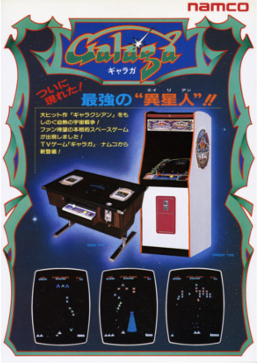
Galaga is a 1981 fixed shooter video game developed and published by Namco for arcades. In North America, it was released by Midway Manufacturing. It is the sequel to Galaxian (1979), Namco's first major video game hit in arcades. Controlling a starship, the player is tasked with destroying the Galaga forces in each stage while avoiding enemies and projectiles. Some enemies can capture a player's ship via a tractor beam, which can be rescued to transform the player into a "dual fighter" with additional firepower.

Dhalsim is a character in Capcom's Street Fighter series. He made his first appearance in Street Fighter II: The World Warrior in 1991. He sometimes goes by the alias "long-arm" and his fighting ability includes stretching his limbs. In the series, he is a mystical yogi who is loved by his villagers and family alike. He is also a pacifist who goes against his beliefs by entering the World Warrior tournament to raise money for his poor village. Throughout the series, Dhalsim is a character centered on morality and he has been noted for his other unique qualities.

Keio Flying Squadron 2 is a 1996 Japanese video game for the Sega Saturn. Developed by Victor Entertainment, it is a direct sequel to Keio Flying Squadron. While the first game is a side-scrolling shoot 'em up, the second game is a platformer with shooter sections.

1943: The Battle of Midway is a 1987 vertically scrolling shooter video game developed and published by Capcom for arcades. It was the first follow-up to Capcom's earlier 1942. Like 1942, the player controls Americans attacking the Japanese air fleet; this was due to being one of the first Capcom games designed with Western markets in mind. The game's name is a reference to the Battle of Midway, which occurred in June 1942.

Final Fight 2 is a 1993 side-scrolling beat 'em up video game released by Capcom for the Super Nintendo Entertainment System. It is the direct sequel to the 1989 coin-operated arcade game Final Fight, which was previously also released for the SNES. Final Fight 2 was developed by Capcom's consumer division with no preceding coin-op version. The game was re-released onto Wii's Virtual Console service in 2009 worldwide.
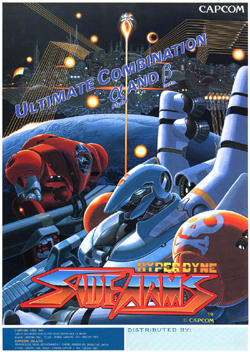
Hyper Dyne Side Arms is a 1986 side-scrolling shooter video game developed and published by Capcom for arcades. The player takes control of a flying mecha fighter who must battle an alien army. Side Arms uses a two-directional attacking system similar to Capcom's previous shoot-'em-up Section Z.
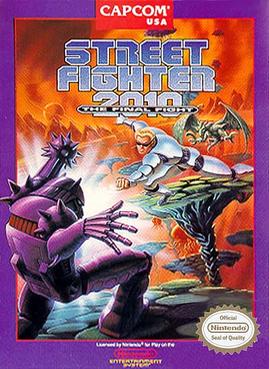
Street Fighter 2010: The Final Fight is a side-scrolling action platform game developed and published by Capcom for the Nintendo Entertainment System in 1990. It was marketed as a science fiction-themed spin-off to the 1987 arcade game Street Fighter. Its English localization changed the name and backstory of the main character to imply that he is Ken from Street Fighter, whereas the protagonist in the original Japanese version is an unrelated character named Kevin. Street Fighter 2010 is a different genre from the traditional Street Fighter games, which are one-on-one fighting games.

Haunting Ground is a survival horror video game developed and published by Capcom for the PlayStation 2 in 2005. The story follows Fiona Belli, a young woman who wakes up in the dungeon of a castle after being involved in a car accident. She quickly befriends a White Shepherd, Hewie, and begins to explore the castle with his aid to seek a means of escape and unravel the mysteries of it and its inhabitants. The game shares many similarities with Capcom's earlier survival horror title Clock Tower 3, and has been described as a spiritual successor to the Clock Tower series.

Vulgus is a 1984 vertically scrolling shooter video game developed and published by Capcom for arcades. Future rival SNK released the game outside Japan. The game was Capcom's first video game. The game is included in Capcom Classics Collection and was released as freeware in 2002.

SonSon is a 1984 platform video game developed and published by Capcom for arcades. It is loosely based on the Chinese novel Journey to the West. The player assumes the role of a monkey boy and fights their way from one side to another, eventually reaching the statue of Buddha. One battles bats, rats, and mad bombers along the way with his fighting rod that shoots balls of fire.
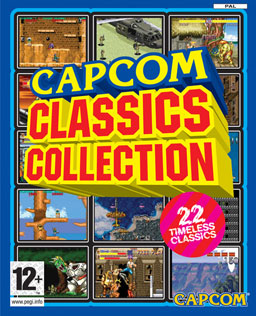
Capcom Classics Collection is a video game compilation developed and published by Capcom for the PlayStation 2 and Xbox. It was developed by Backbone Entertainment, Sensory Sweep, and its Japanese developer Klein Computer Entertainment. A second volume, Capcom Classics Collection Vol. 2, was released on November 14, 2006 in North America, for PlayStation 2 and Xbox. The second volume as well as the Xbox version of the first volume were not released in Japan.
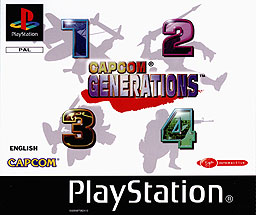
Capcom Generations is a series of five video game compilations developed and published by Capcom for the PlayStation and Sega Saturn. Each volume contains three or four games from a particular series or game genre and were ported directly from their original arcade versions. Each disc also contains a "collection mode" featuring history, tips, artwork, character profiles, arranged music and other unlockable contents for each game. The PlayStation versions of the games also featured support for the DualShock controller.

Captain Silver is a side-scrolling hack and slash platform game released as an arcade video game by Data East in 1987. Home versions were published for the Master System by Sega and for the Famicom by Tokuma Shoten.
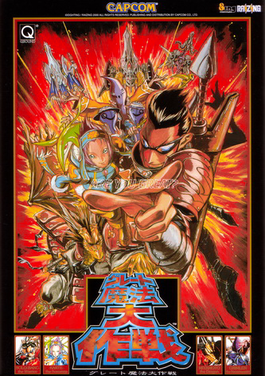
Dimahoo is a medieval-themed manic shooter video game developed by 8ing/Raizing and published by Capcom on the arcade cabinets in 2000. It was released in Japan as Great Mahou Daisakusen. It is a sequel to 1993's Sorcer Striker and 1994's Kingdom Grand Prix. The game's soundtrack was published by Suleputer.

Three Wonders is a 1991 video game compilation developed and published by Capcom for arcades. It includes three related titles: Midnight Wanderers: Quest for the Chariot, a platformer; Chariot: Adventure through the Sky, a scrolling shooter; and Don't Pull, a puzzle video game. Xing Entertainment released the game on the PlayStation and Sega Saturn under license from Capcom.
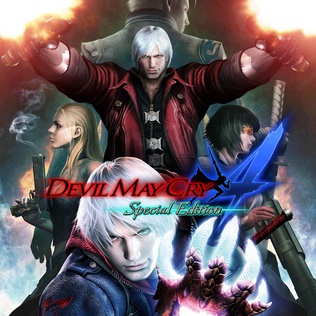
Devil May Cry 4: Special Edition is a 2015 action-adventure game developed and published by Capcom. A remastered version of Capcom's action-adventure game Devil May Cry 4, it was released for PlayStation 4, Windows, and Xbox One. The game features new playable characters, new cutscenes, polished gameplay, improved graphics, the option to switch between English and Japanese voice tracks, and additional costumes.

Capcom Arcade Cabinet is a video game compilation developed by M2 and published by Capcom in 2013 for the PlayStation 3 and Xbox 360. The compilation comprises 17 games initially released by Capcom between 1984 and 1987, which were distributed in five separate packs of three games during February–April 2013, with two additional games unlocked for customers that purchased all five packs. An arcade machine was made to promote the Capcom Arcade Cabinet series at the Gadget Show Live 2013 in Birmingham, UK.

TaleSpin is a scrolling shooter video game based on the Disney television series TaleSpin. The game was developed by Capcom for the NES in 1991 and was ported to the Game Boy in 1992. The Game Boy version is essentially a slightly stripped-down version of the game.

Capcom Arcade Stadium is a 2021 video game compilation developed and published by Capcom. It includes 32 arcade games originally published by Capcom between 1984 and 2001; the game itself is free to download with a single free game, while the others require individual purchases. The compilation was initially released on Nintendo Switch, then on PlayStation 4, Windows, and Xbox One, and later Amazon Luna. A second compilation, Capcom Arcade 2nd Stadium, was released in 2022.





















